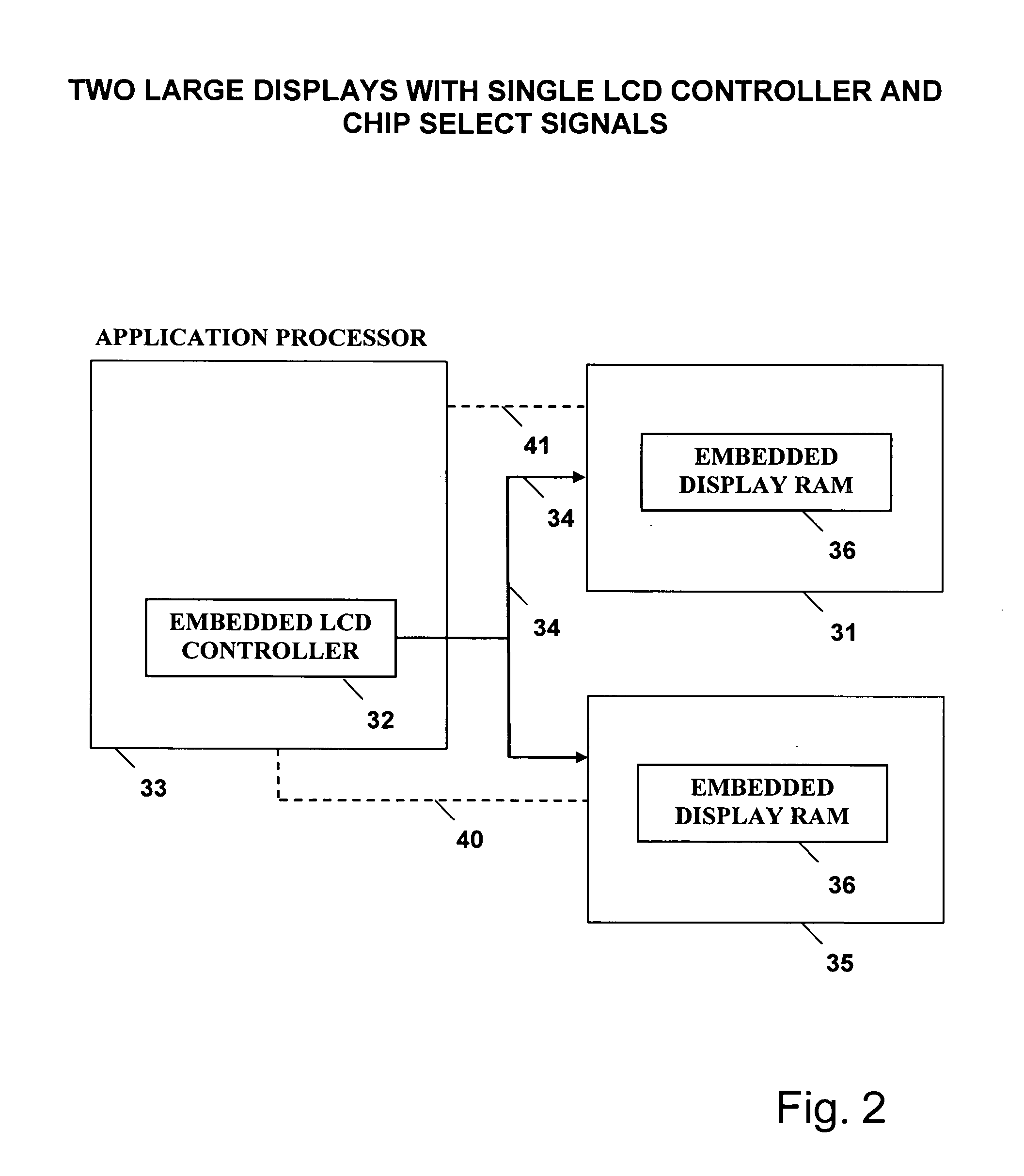Dual display device using single display controller
a display controller and dual-display technology, applied in the field of dual-display devices, can solve the problems of large limitation, no prior art solution known, and inability to drive a larger display with higher display resolution, and achieve the effect of increasing the bill of materials
- Summary
- Abstract
- Description
- Claims
- Application Information
AI Technical Summary
Problems solved by technology
Method used
Image
Examples
Embodiment Construction
[0053]FIG. 1 shows prior art illustration of a mobile device supporting two large displays using two LCD controllers. High frame rate display 31 is connected to embedded LCD controller 32 of application processor 33 using embedded LCD controller bus 34 which operates in RGB interface mode. Low frame rate display 35 with embedded display RAM 36 is connected to external LCD controller 37 using external LCD controller bus 38 which operates in smart panel interface mode. External LCD controller 37 is connected to application processor 33 using application processor system bus 39. Prior art solutions mandate external LCD controller 37 to support low frame rate display 35 because, embedded LCD controller 32 is unable to support two displays with different frame rates simultaneously by interconnecting embedded LCD controller bus 34. This limitation increases the development, manufacturing and operation cost of the device. Development cost is increased due to change in design, manufacturing...
PUM
 Login to View More
Login to View More Abstract
Description
Claims
Application Information
 Login to View More
Login to View More - R&D
- Intellectual Property
- Life Sciences
- Materials
- Tech Scout
- Unparalleled Data Quality
- Higher Quality Content
- 60% Fewer Hallucinations
Browse by: Latest US Patents, China's latest patents, Technical Efficacy Thesaurus, Application Domain, Technology Topic, Popular Technical Reports.
© 2025 PatSnap. All rights reserved.Legal|Privacy policy|Modern Slavery Act Transparency Statement|Sitemap|About US| Contact US: help@patsnap.com



